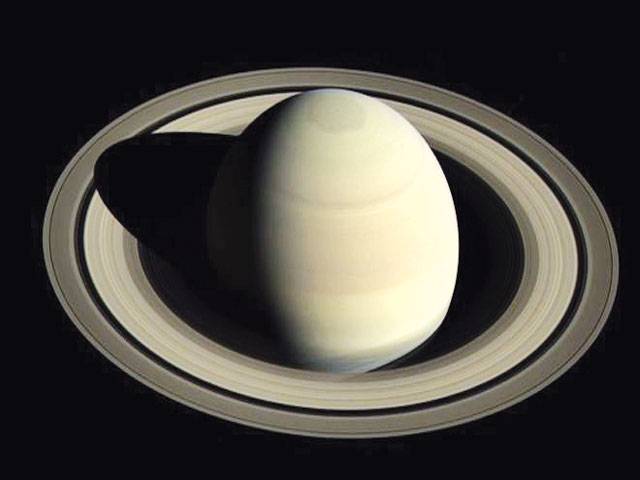WASHINGTON-Saturn has overtaken Jupiter as the planet with the most moons, according to US researchers. A team discovered a haul of 20 new moons orbiting the ringed planet, bringing its total to 82; Jupiter, by contrast, has 79 natural satellites. The moons were discovered using the Subaru telescope on Maunakea, Hawaii. Each of the newly discovered objects in orbit around Saturn is about 5km (three miles) in diameter; 17 of them orbit the planet “backwards”.
This is known as a retrograde direction. The other three moons orbit in a prograde direction - the same direction as Saturn rotates.Two of the prograde moons take about two years to travel once around the ringed planet. The more-distant retrograde moons and one of the prograde moons each take more than three years to complete an orbit.
“Studying the orbits of these moons can reveal their origins, as well as information about the conditions surrounding Saturn at the time of its formation,” said Dr Scott Sheppard, from the Carnegie Institution for Science in Washington DC, who led the team. Dr Sheppard told BBC News that Jupiter had been the planet with most known moons since the late 1990s.
The outer moons in the new haul appear to be grouped into three distinct clusters, based on the inclinations of the angles at which they orbit the planet. Scientists think the retrograde and prograde moons are the broken up remnants of at least three larger bodies. These bigger objects were smashed up by collisions, either between distinct moons or with outside objects such as passing asteroids.
“These moons have fairly inclined orbits to Saturn and are pretty far out, so we don’t think they formed with the planet, we think they were captured by the planet in the past. If an asteroid happens to be passing by, you can’t capture it today because you can’t dissipate its energy,” Dr Sheppard told BBC News.
However, in the Solar System’s youth, when Saturn was in the process of forming, a cloud, or “disc”, of dust and gas surrounded the planet. This helped dissipate the energy of passing objects. But in most cases, these bodies ended up spiralling into the planet and becoming part of it.
Friday, April 19, 2024
Saturn overtakes Jupiter as planet with most moons

3:56 PM | March 28, 2024
4:14 PM | March 23, 2024
Fire erupts in house, no casualties reported
April 19, 2024
Minister chairs meeting on modern farming
April 19, 2024
PPP leader Arbab appears before accountability court
April 19, 2024
Weapons, drugs seized in Rawalpindi raids
April 19, 2024
CAA holds e-katcheri, addresses passengers’ concerns
April 19, 2024
Hepatitis Challenge
April 18, 2024
IMF Predictions
April 18, 2024
Wheat War
April 18, 2024
Rail Revival
April 17, 2024
Addressing Climate Change
April 17, 2024
Justice denied
April 18, 2024
AI dilemmas unveiled
April 18, 2024
Tax tangle
April 18, 2024
Workforce inequality
April 17, 2024
New partnerships
April 17, 2024
ePaper - Nawaiwaqt
Advertisement
Nawaiwaqt Group | Copyright © 2024





